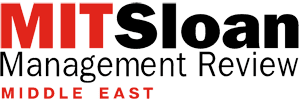Hybrid Work Is Not the Problem — Poor Leadership Is
Learn from companies that are succeeding with hybrid work models — by building teams that are rewarded for performance, not appearances.
News
- CBD Becomes the UAE’s First Bank to Go Live Under the Open Finance Framework
- Will Halt Potential Rogue AI Systems, Says Microsoft AI Chief
- Google Bets Big on Data Infra With a $4.75B Deal in Intersect
- OpenAI Softens ChatGPT’s Tone While Scaling for an AI Showdown
- UAE President Meets Musk to Discuss AI and Cross-Border Collaboration
- UAE Forms National Media Authority to Centralize Media Oversight

“My CEO just came back from another CEO event, and he’s on a rampage about return-to-office.”
The three of us coauthors hear a variation of this every week. The pattern is familiar: CEOs return from a peer gathering convinced that really getting everyone back to the office will solve productivity concerns, cultural disconnection, and competitive pressures. They’ve heard anecdotes about disengaged employees who are not complying with the return-to-office (RTO) mandates that have been put in place, and they’re ready to order stricter rules when it comes to office attendance.
What’s both fascinating and frustrating about these conversations is that these leaders are fixated on the wrong problem. They’re treating hybrid work as a policy challenge. It’s not! It’s a leadership capability challenge. While they debate cranking up in-office days per week and what punishments they might use to threaten employees, other companies, including their competitors, are paying a lot less attention to whether teams collaborate from home, the office, or anywhere in between, and are building an organizational strength that drives superior business results.
Each of us has worked with dozens of Fortune 500 companies across industries, including financial services leaders like Allstate and Capital One and defense contractors like Teradyne. We’re seeing that the organizations excelling at flexible work today share identical capabilities that have nothing to do with specific attendance policies. Instead, they’ve discovered that workplace transformation isn’t about where people work — it’s about how they work together to drive outcomes.
The Policy Trap: Why RTO Mandates Miss the Mark
Most executives approach hybrid work the same way they approach other business challenges: Set a policy, communicate expectations, and measure compliance. The logic seems sound: If they establish clear rules (like three days in the office each week) and monitor adherence (by tracking badge data, for instance), they should be able to expect positive results (like more work done, more deals closed, or more serendipitous interactions that spark creative ideas). When the policy doesn’t stick and results don’t materialize, executives conclude that hybrid work “doesn’t work.”
RTO mandates have put managers in a bind. Our analysis of over 8,500 U.S. companies through the Flex Index, combined with the U.S. Survey of Working Arrangements and Attitudes, reveals a telling pattern: While policy mandates for in-person work increased 12% since the first quarter of 2024, actual attendance rose only 1% to 3%. Companies asking for three in-office days typically get two.
The compliance gap isn’t just about employee resistance — it signals that managers, faced with choosing between terminating productive employees and maintaining performance by keeping them, consistently choose results (that is, looking the other way about compliance) over rule-following.
The real cost isn’t the attendance gap. It’s the management attention consumed by this debate.
What Research Actually Shows
Recent discourse about hybrid work has been dominated by selective research interpretation that ignores the broader evidence base. This approach fundamentally misunderstands what drives workplace effectiveness. To date, no peer-reviewed research shows a benefit to having a rigid five-day office model. Instead, a comprehensive review of peer-reviewed studies reveals a more nuanced reality.
To date, no peer-reviewed research shows a benefit to a rigid five-day office model.
One of us (Nick) published a study in Nature that found that while hybrid arrangements during the height of COVID-19 (2021-2022) had no negative impact on productivity, they reduced employee attrition by 33% compared with full-time office work, saving companies millions annually in turnover costs. His more recent 2025 study of call center workers in Turkey found that productivity increased 10% with remote work. As importantly, remote work diversified the workforce, which gained more female, married, and nonmetropolitan employees; as the report notes, “This group has low employment in Turkey due to traditional norms against married women working.” Fully remote work also opened up access to a wider labor pool that included more educated and experienced workers, at no increase in labor costs.
Another of us (Raj) conducted research with the U.S. Patent and Trademark Office that revealed that when workers were allowed to choose where to live and work, there was a 4.4% increase in output at the same quality level, with improved work-life balance, lower attrition, and no decline in collaboration effectiveness. His 2022 study showed that teams that were together 23% to 40% of the time performed best across multiple dimensions compared with teams that were together more time or less. The best-performing teams independently decided when they would gather, whether that meant one or two days per week, one week per month, or a few times per quarter.
Analysis by the collaboration software company Atlassian of over 1,000 days of distributed operations among its employees found that teams gathering quarterly saw a 27% boost in engagement, which was higher than random in-office encounters. Similarly, Gallup research consistently shows that both remote and hybrid workers have significantly higher engagement scores than full-time office employees.
Research on innovation reveals that proximity advantages are less considerable than they’re given credit for and have diminished significantly. A 2022 study of breakthrough scientific discoveries found that while colocation historically benefited innovation, the negative impact of remote collaboration tapered off in the 2010s, and the effect even became positive by 2015. Innovation, it turns out, draws more on diverse perspectives — enhanced by wide-ranging workforces — and psychological safety than on physical proximity.
Four Capabilities That Drive Hybrid Work Success
Organizations succeeding at flexible work, regardless of their specific policies, consistently excel in four foundational areas. These capabilities enable companies to harness the productivity and engagement benefits that research has found while avoiding the pitfalls that derail policy-focused approaches.
1. Know Your Talent Edge
The most successful hybrid implementations start with strategic clarity about the organization’s competitive advantage, not with arbitrary attendance rules. This means understanding what drives performance in your specific context and how flexibility for talent might support broader business objectives.
When Airbnb launched its “live and work anywhere” employee policy in 2022, the policy wasn’t just about making the company’s current workers happier. It was a strategic repositioning to recruit top designers from Apple and other companies that had more restrictive policies. In a competitive talent market for design and product roles, flexibility became not just a perk but the company’s competitive advantage.
A similar strategy has been adopted by the European Central Bank, which earlier this year extended what it calls its 110-day “teleworking” option for another two years. Fortune noted that “the ECB competes with private banks for top talent but is unable to match salaries or bonuses paid by those banks. … [Its] hybrid work policy could, however, offer it an advantage.”
Allstate took a different strategic approach to its talent advantage. Rather than implementing uniform policies, leaders recognized that different functions require different collaboration patterns. Marketing designers work together Tuesday through Thursday for creative collaboration, analysts gather monthly for intensive data sessions, and claims agents receive in-person training for their first few weeks before working from anywhere. Each pattern reflects specific work requirements and team dynamics.
2. Measure Results, Not Presence
The shift from monitoring activity to measuring outcomes is perhaps the most critical — and difficult — transformation for most organizations. It requires moving beyond “Is Sarah showing up as frequently as we’ve asked her to?” to “What result is Sarah delivering?”
Atlassian leads in this area through transparent goal-setting and progress tracking. All teams set three to five quarterly goals that measure shared success and ladder up organizationally. Tweet-sized weekly and monthly updates are shared transparently. Anyone in the organization can track any goal. This transparency builds alignment and trust while creating the foundation for judging performance on results, not activity.
When promotion decisions are influenced by who shows up earliest and stays latest, leaders inadvertently favor those who don’t have caregiving responsibilities.
Financial services company Synchrony has taken a similar path in recent years. As CEO Brian Doubles has written, “By focusing on employees’ measurable results instead of hours logged in the office, we’ve seen stronger productivity and business outcomes.” No surprise, then, that research from the Institute for Corporate Productivity shows high-performing companies are 11 times more likely to have senior leaders who trust employees to do their jobs.
Policies that focus on results also have a chance to address one of modern workplaces’ most pernicious problems: proximity bias. When promotion decisions are influenced by who shows up earliest and stays latest, leaders inadvertently favor those who don’t have caregiving responsibilities.
More broadly, research consistently shows that women value workplace flexibility more than men. Multiple studies have shown that women are up to three times more likely than men to leave when faced with rigid return-to-office mandates, with some terming this withdrawal of female talent a “she-cession.” In part, this is driven by caregiving responsibilities, which disproportionately fall on women. For working mothers of young children, recent RTO drives have led to a 3-percentage-point decline in workplace participation in just the past year — reversing pandemic-era gains.
Caregiving isn’t the only issue. Gender bias and discrimination at work are almost twice as likely to occur in the office as remotely. This contributes to an appreciation for flexibility among women who aren’t parents as well as those who are.
3. Let Teams Lead the Way
The biggest mistake in hybrid implementation is assuming that one size fits all. As Raj’s research demonstrated, successful hybrid programs worked when teams chose patterns that matched their specific collaboration needs rather than following uniform mandates.
Atlassian has mastered this team-centered approach through extensive research and implementation. It empowers teams to create working agreements that address not just location but core collaboration patterns. For a team distributed across North America, this might mean establishing three hours at midday as guaranteed overlap time. For colocated teams, it might mean Tuesday through Thursday as in-person collaboration days. These agreements succeed because they’re created by people who must live with them rather than being imposed from above. Teams understand their collaboration needs, client requirements, and workflow patterns better than executives in conference rooms do.
Teradyne, a defense contractor with complex engineering requirements, illustrates how this can work in a highly regulated environment. Hardware teams that need lab access work together three or four days a week: If you’re a team of mechanical engineers, you need to be in the facility most days, but not all. But sales teams are on the road, and IT teams may be distributed across company locations. Each pattern reflects the specific technical and regulatory requirements of the team’s work.
One challenge with team-based norms is that they sometimes never take hold because managers treat them as a box-checking exercise or don’t spend enough time creating them. As we’ve found in our work with multiple organizations, ensuring general compliance with sensible plans is important. Unfettered individual choice creates a “collaboration tax” on the team overall. That’s one reason why organizations like Microsoft have adopted sensible corporate RTO standards (in its case, three days a week) while allowing business units and teams to vary their approaches.
4. Invest in Getting Better
This step is where most organizations fail because they treat hybrid work as a policy change rather than a capability-building exercise. Companies that succeed over the long term make sustained investments in three critical areas.
The first area is infrastructure redesign. If teams return to offices designed for 2019 work patterns — rows of individual desks with few collaboration areas or spaces to conduct video calls — they’ll be frustrated, not inspired and productive. Companies such as Dropbox and Zillow have redesigned spaces specifically for workers who are in the office on a part-time basis. That means fewer individual workstations, more team collaboration areas, and better technology for seamless virtual participation.
The goal is to build organizational muscle for driving results through trust, accountability, and strategic focus.
PagerDuty’s solution exemplifies thoughtful space redesign. The operations platform company, which has eight global offices in expensive cities, including San Francisco, London, and Tokyo, downsized square footage but upgraded layouts. In Toronto, for instance, the company reduced office space from 27,000 square feet to 8,500. A new common area can accommodate a 30-person team or — through the removal of flexible dividers and furniture — up to 60 employees. The office has just 24 individual desks but provides alternative seating options, such as phone booths and small meeting rooms. For the infrequent times when more than 60 people need to gather, they meet offsite. The key insight is that people may come to the office less frequently, but connection and collaboration still benefit from time together in spaces that support those needs.
The second area of investment is resource allocation. When teams are distributed, leaders need to budget for bringing them together intentionally. Atlassian’s research shows that quarterly team gatherings can positively affect engagement more than daily chance encounters. This means that flying in and housing team members for targeted gatherings can pay off. It can also pay to have a central team that facilitates and supports these team gatherings, as Zillow does.
The third area of investment is skill development. Research shows that only 25% of managers have received training on how to lead distributed teams. We have expected leaders to figure out this fundamental shift independently and then act surprised when it doesn’t work perfectly.
Creating playbooks for managers and teams, with topics ranging from what to cover in weekly team updates to how to set goals, is one way forward. This investment, alongside training and factoring engagement into performance appraisals, pays dividends in both employee engagement and business results as teams learn to collaborate effectively across locations and time zones.
How to Get Started Today
You don’t need to perfect this framework before beginning. Organizations using it most effectively started with pilots and experiments to learn what worked for their specific context.
Start with strategic clarity. What’s the real problem you’re trying to solve? Are your teams distributed or colocated? What’s your actual employee value proposition?
Next, commit to outcomes-based management, accepting that it will initially be imperfect. As we’ve seen across dozens of organizations, even implementing rudimentary goal tracking is exponentially better than assuming that because someone’s at an onsite desk, they’re working better and smarter than they would be somewhere else.
You should then focus on functions and teams as the center of transformation. Individual flexibility choices have their place, but sustainable change happens through peer influence and shared problem-solving within teams that understand their group-specific work requirements.
Finally, be committed to investing in learning. The companies thriving five years from now won’t be those that figured out the “right” hybrid policy. They’ll be the ones that built organizational capabilities for whatever changes come next.
The goal isn’t to get this flawlessly executed immediately. The goal is to build organizational muscle for driving results through trust, accountability, and strategic focus.
Today’s leadership challenge isn’t about “remote work” anymore; it’s about leading distributed teams effectively. When a product manager in Seattle works with developers in Austin and designers in Boston, mandating five days in the office doesn’t create collaboration and doesn’t make sense. It just creates expensive commutes to empty conference rooms for Zoom calls.
While narrow-thinking CEOs debate office policies and measure badge swipes, organizations with the four capabilities we just explored are quietly building sustainable advantages. They can recruit talent globally. They can retain high performers. And they can adapt to whatever transformation comes next. Their teams are aligned around goals, not compliance, and rewarded for performance, not appearances.
The future of work is about how we work together to create value. The research is clear: When implemented thoughtfully, hybrid approaches deliver superior outcomes for both people and businesses.








